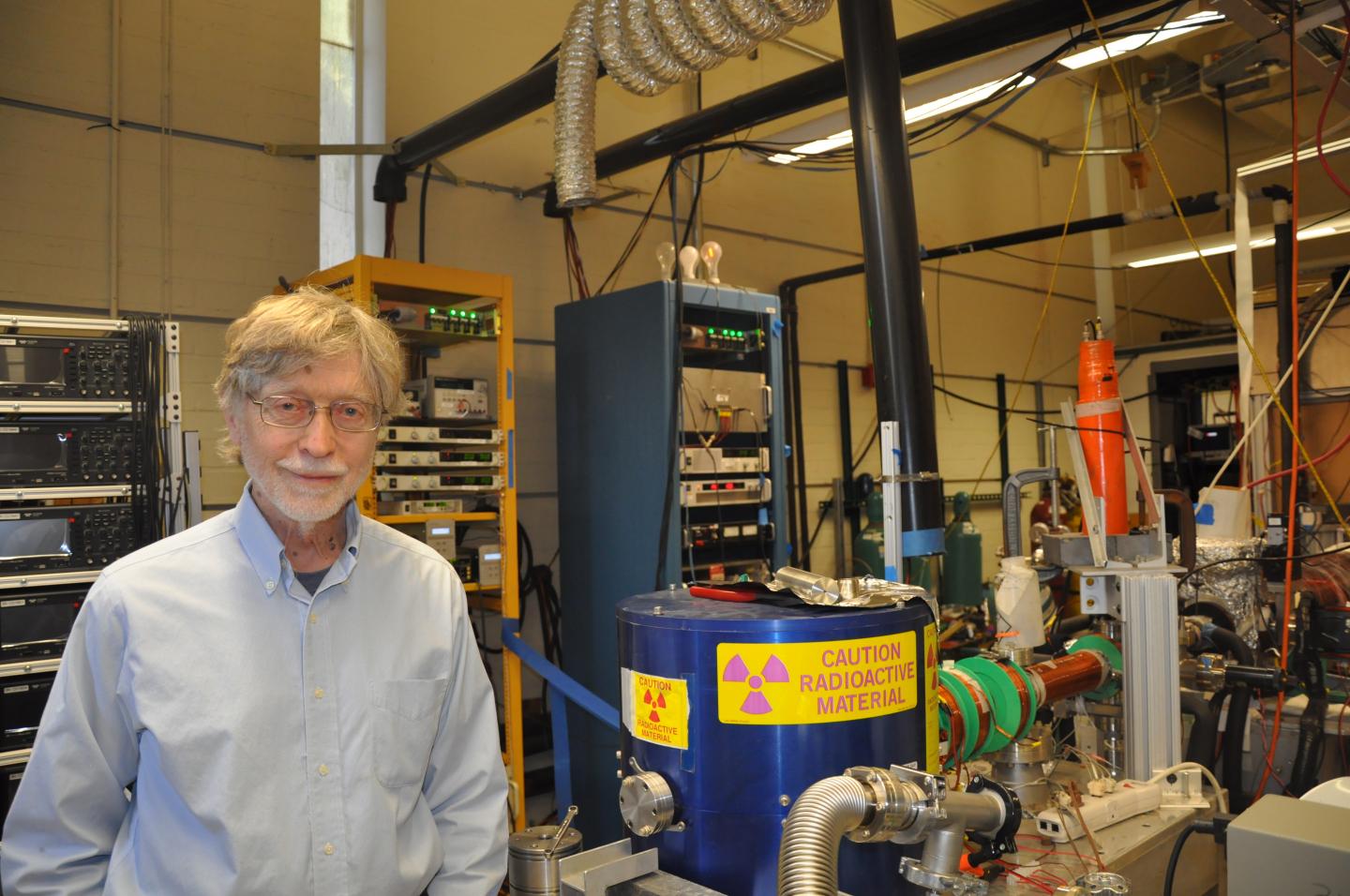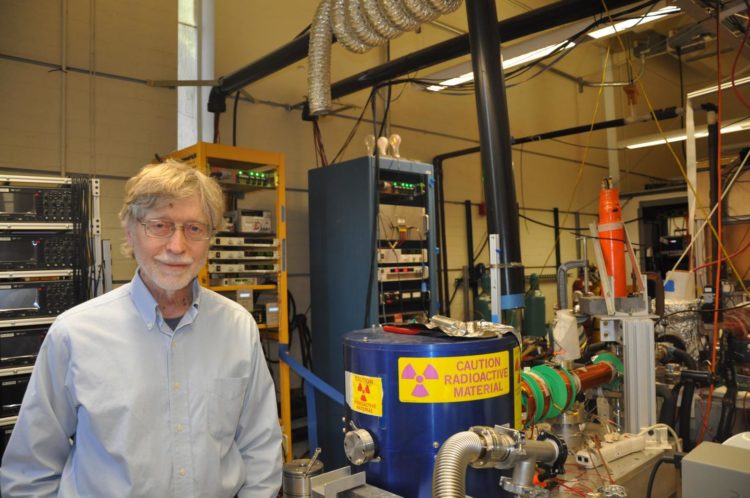Calculations by UC Riverside’s Allen Mills predict metastable positronium bubbles in liquid helium

Credit: I. Pittalwala, UC Riverside.
RIVERSIDE, Calif. — A physicist at the University of California, Riverside, has performed calculations showing hollow spherical bubbles filled with a gas of positronium atoms are stable in liquid helium.
The calculations take scientists a step closer to realizing a gamma-ray laser, which may have applications in medical imaging, spacecraft propulsion, and cancer treatment.
Extremely short-lived and only briefly stable, positronium is a hydrogen-like atom and a mixture of matter and antimatter — specifically, bound states of electrons and their antiparticles called positrons. To create a gamma-ray laser beam, positronium needs to be in a state called a Bose-Einstein condensate — a collection of positronium atoms in the same quantum state, allowing for more interactions and gamma radiation. Such a condensate is the key ingredient of a gamma-ray laser.
“My calculations show that a bubble in liquid helium containing a million atoms of positronium would have a number density six times that of ordinary air and would exist as a matter-antimatter Bose-Einstein condensate,” said Allen Mills, a professor in the Department of Physics and Astronomy and sole author of the study that appears today in Physical Review A.
Helium, the second-most abundant element in the universe, exists in liquid form only at extremely low temperatures. Mills explained helium has a negative affinity for positronium; bubbles form in liquid helium because helium repels positronium. Positronium’s long lifetime in liquid helium was first reported in 1957.
When an electron meets a positron, their mutual annihilation could be one outcome, accompanied by the production of a powerful and energetic type of electromagnetic radiation called gamma radiation. A second outcome is the formation of positronium.
Mills, who directs the Positron Laboratory at UC Riverside, said the lab is configuring an antimatter beam in a quest to produce the exotic bubbles in liquid helium that Mills’ calculations predict. Such bubbles could serve as a source of positronium Bose-Einstein condensates.
“Near term results of our experiments could be the observation of positronium tunneling through a graphene sheet, which is impervious to all ordinary matter atoms, including helium, as well as the formation of a positronium atom laser beam with possible quantum computing applications,” Mills said.
###
The research was supported by the National Science Foundation.
The University of California, Riverside is a doctoral research university, a living laboratory for groundbreaking exploration of issues critical to Inland Southern California, the state and communities around the world. Reflecting California’s diverse culture, UCR’s enrollment is more than 24,000 students. The campus opened a medical school in 2013 and has reached the heart of the Coachella Valley by way of the UCR Palm Desert Center. The campus has an annual statewide economic impact of almost $2 billion. To learn more, email [email protected].
Media Contact
Iqbal Pittalwala
[email protected]
951-827-6050





